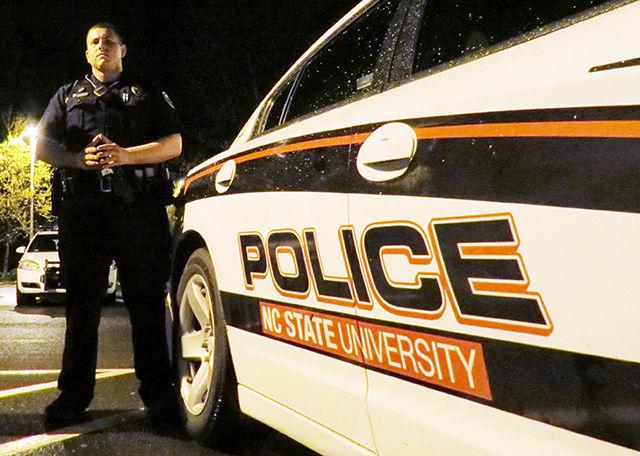In the wake of the Parkland, Florida, high school shooting, safety protocol and gun control debates have been prominent points of discussion around the nation. NC State’s Crime Prevention Unit has a general response guide with three steps in the case of an active shooter situation: run, hide and fight.
“It’s all about keeping things very general because if you give a person a very specific plan on how to handle a situation and then what happens doesn’t meet that specific plan, they’re not going to know what to do,” said Nate Hitchings, a public safety officer for the University’s Crime Prevention and Community Relations Unit. “We do get out, hide out or take out the shooter.”
When receiving an active shooter tip, the unit first validates the matter before creating a university alert to ensure there are no false alarms. Support Services Major Ian Kendrick discussed how college protocol has evolved over the years.
“Pre-Columbine, it used to be that officers or public safety would contain the scene and wait for the SWAT guys to show up in their big trucks and black outfits and go in and neutralize the suspect,” Kendrick said. “Columbine changed everything; it takes too long to get a SWAT team to a location where an active shooter is going on, so the tactics changed to where the first officers on scene, [those] men and women have got to go in and take care of business. You have got to stop the shooting as soon as possible.”
For students, police find that effective protocol includes to run, hide and fight as a last resort. “Run” entails moving away from the violence and to a safe location, planning an escape route and leaving belongings behind. “Hide” refers to finding shelter out of the shooter’s view, locking doors, turning off lights and taking cover. “Fight” is attempting to disarm or overpower the shooter.
“Our position has changed from ‘contain and wait’ to ‘arrive and act,’” Kendrick said.
Mackenzie Patton, a third-year studying foreign languages and literature, is president of NC State’s Political Science Club. Patton discussed why she believes it is hard to make policy changes regarding gun legislation.
“I think it makes every student scared, me for sure,” Patton said. “I think that it polarizes politics and parties and people even more arguing about gun control. It’s hard to make big change that everyone wants.”
Regarding protocol, Patton talked about her desire for an increase in safety talk throughout the school year.
“It makes me realize that I don’t know NC State’s policies at all about what to do if there is an active shooter situation,” Patton said. “It’s cliche to say, but it makes you realize like it could happen to you to.”
Steven Greene, a political science professor, has a different take on preparing teachers and students for what to do in the case of an active shooter.
“It’s looking to solve the problem at the wrong end,” Greene said. “Let’s make it a lot harder for people to have guns, especially angry and violent people. That’s what we need to concentrate on.”
Hitchings and Kendrick, along with the rest of the Crime Prevention Unit, are working with various campus community partners to expand that safety training, although they recognize the logistic difficulties.
“To make something mandatory at an institution of this size, that would have to be an administration down push, particularly through the provost and so forth, especially when it affects the students,” Kendrick said.
Kendrick recommended for students to sign up for WolfAlerts and report any suspicious, disconcerting activity to their nonemergency number at 919-515-3000.
“We want to make sure people are tied into the WolfAlert system,” Kendrick said. “We encourage them to do that because that’s how we’re going to communicate information and how to protect yourselves. In the case of an active shooter or an incident in which we have a high confidence is real, we’re going to be pushing that information out through your text, emails and you may even hear the WolfAlert sirens going off giving you some preliminary instructions, like shelter in place.”
Hitchings has been in contact with multiple partners, such as the criminology and exploratory studies departments.
“My big thing is to try and get more students involved and get this training,” Hitchings said. “I reach out to different campus community partners. This past year, my big one was reaching out to exploratory studies and partnering with them in order to get more students this active shooter response program we have.”
An active shooter instructional video titled “Shots Fired on Campus: When Lightning Strikes” is also available on the University Police Department’s website for further training.
“I would encourage people to reach out to us to receive this active shooter training,” Hitchings said. “We like to do it with groups. It would be something we would be interested in getting more students.”
NC State’s Crime Prevention Unit can be reached by phone at 919-515-5963 or through email at crimeprevention@ncsu.edu. The NC State University Police Department’s website can be found here.








